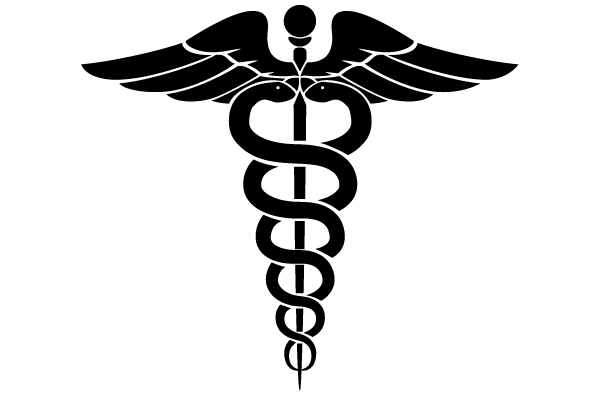Wolff-Parkinson-White (WPW) syndrome
Wolff Parkinson White Syndrome is defined as a congenital condition involving abnormal conductive cardiac tissue between the atria and the ventricles that provides a pathway for a reentrant tachycardia circuit, in association with supraventricular tachycardia (SVT)
Signs and symptoms : They may have their onset at any time from childhood to middle age, and they can vary in severity from mild chest discomfort or palpitations with or without syncope to severe cardiopulmonary compromise and cardiac arrest. Thus, presentation varies by patient age : Infants may present with the following:
Tachypnea Irritability Pallor Intolerance of feedings Evidence of congestive heart failure if the episode has been untreated for several hours A history of not behaving as usual for 1-2 days An intercurrent febrile illness may be present
A verbal child with Wolff Parkinson White syndrome usually reports the following: Chest pain Palpitations Breathing difficulty. Older patients can usually describe the following: Sudden onset of a pounding heartbeat Pulse that is regular and “too rapid to count” Typically, a concomitant reduction in their tolerance for activity Physical findings include the following: Normal cardiac examination findings in the vast majority of cases During tachycardic episodes, the patient may be cool, diaphoretic, and hypotensive. Crackles in the lungs from pulmonary vascular congestion (during or following an SVT episode). Many young patients may present with resting tachycardia on examination, with only minimal symptoms (eg, palpitations, weakness, mild dizziness) despite exceedingly fast heart rates
Clinical features of associated cardiac defects may be present, such as the following: Cardiomyopathy Ebstein anomaly Hypertrophic cardiomyopathy
Diagnosis
Routine blood studies may be needed to help rule out noncardiac conditions triggering tachycardia. These may include the following:- Complete blood count
- Chemistry panel, with renal function studies and electrolytes
- Liver function tests
- Thyroid panel
- Drug screening
- A shortened PR interval (typically <120 ms in a teenager or adult) A slurring and slow rise of the initial upstroke of the QRS complex (delta wave).
- A widened QRS complex (total duration >0.12 seconds).
- ST segment–T wave (repolarization) changes.
- Evaluation of left ventricular (LV) function, septal thickness, and wall motion abnormalities.
- Excluding cardiomyopathy and an associated congenital heart defect (eg, HOCM, Ebstein anomaly, L-transposition of the great vessels).
- To reproduce a transient paroxysmal SVT, which is triggered by exercise.
- To document the relationship of exercise to the onset of tachycardia.
- To evaluate the efficacy of antiarrhythmic drug therapy (class Ic antiarrhythmic medications and effects on antegrade preexcitation).
- To determine whether consistent or intermittent preexcitation is present at different sinus (heart) rates.
- The mechanism of the clinical tachycardia
- The number and locations of accessory pathways (necessary for catheter ablation)
- The response to pharmacologic or ablation therapy
- Radiofrequency ablation of the accessory pathway
- Antiarrhythmic drugs to slow accessory pathway conduction
- AV nodal blocking medications in adult patients to slow AV nodal conduction in certain situations (ie, Mahaim or atriofascicular pathway-mediated SVT; typically, AV node-conduction blocking medications are avoided in the acute setting of WPW).
- For adult WPW patients, address the triggers that perpetuate the dysrhythmia, which include coronary heart disease (CAD), ischemia, cardiomyopathy, pericarditis, electrolyte disturbances, thyroid disease, and anemia.
- Termination of acute episodes Narrow-complex AV reentrant tachycardia (AVRT) and AV nodal reentrant tachycardia (AVNRT) are treated by blocking AV node conduction with the following: Vagal maneuvers (eg, Valsalva maneuver, carotid sinus massage, splashing cold water or ice water on the face) Adults: IV adenosine 6-12 mg via a large-bore line (the drug has a very short half-life) Adults: IV verapamil 5-10 mg or diltiazem 10 mg Pediatric patients: Adenosine and verapamil or diltiazem are dosed on the basis of weight.
- Atrial flutter/fibrillation or wide-complex tachycardia is treated as follows: IV procainamide or amiodarone if wide-complex tachycardia is present, ventricular tachycardia (VT) cannot be excluded, and the patient is stable hemodynamically Ibutilide.
- The initial treatment of choice for hemodynamically unstable tachycardia is direct-current synchronized electrical cardioversion, biphasic, as follows: A level of 100 J (monophasic or lower biphasic) initially If necessary, a second shock with higher energy (200 J or 360 J)





